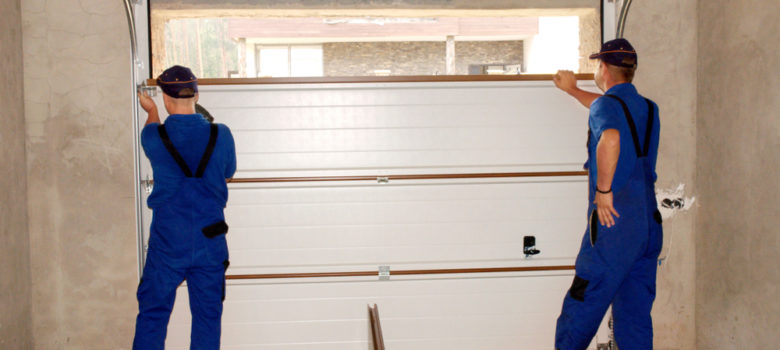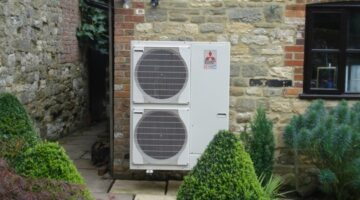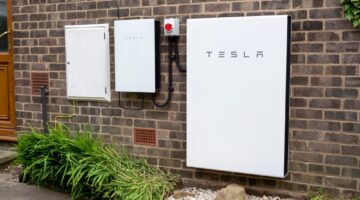
People are becoming more and more aware of the environmental impact that human activity has on the planet. Concerning statistics, such as the rising levels of atmospheric carbon dioxide and NASA’s ‘unequivocal’ evidence for climate change, has changed attitudes, leaving many people wondering what they can do to protect the environment.
While changing your car or recycling more often may be some of the more well-known solutions, choosing to make your home a little more eco-friendly can also make a huge difference – not only to your carbon footprint, but also to your heating bills. Whether you plant more trees in your garden, make an active effort to reduce food waste, or choose to heat your home with renewable energy, there are many things you can do to make your house more sustainable.
One area you shouldn’t overlook is the garage. By making sustainable changes and creating an ‘eco garage’, you could save yourself a lot of money and increase the value of your home in the process. Here are some ideas on how to greenify your garage:
- Insulate, insulate, insulate
Your first port of call has to be installing insulation. Depending on the time of year, garages are often the coldest or warmest room in the house – trapping heat in the summer and cold in the winter. Without effective insulation, this trapped heat transfers into the rest of the house, meaning air conditioning units or fans are required when the house gets too warm. Conversely, in the winter, cold air transfers into the house, meaning you then spend more on heating. By choosing to insulate, you can create an effective means of trapping this air, saving yourself a lot of money in the long run. It isn’t just the interior walls you need to think about when insulating though – there are many other areas of the garage to consider. Think about:
- Upgrading your garage door. Pretty obvious when you think about it, but having a high-quality garage door can make a huge difference to your garage’s internal environment. Many garage door companies offer a wide range of doors to choose between, manufactured from eco-friendly insulation materials specifically designed to reduce heat loss. Having a damaged garage door limits its effectiveness so, if your garage door is in need of repair, consult a qualified expert who will be able to diagnose and fix any issues. Alternatively, think about upgrading to a newer version but, whatever you do, keep away from single-layer doors. The more layers your garage door can have, the better.
- Sealing your interior door. While your interior door isn’t directly exposed to the weather outside, as it is the access point to the inside of your home, it’s important for it to be well-sealed and weather-stripped. Add a draught excluder around the door’s frame to reduce the need for extra heating or cooling.
- Repairing exterior walls. Cracks and external damage allow internal heat to seep outside and cold external air to seep in. Seal any visible cracks with caulking, and use drywall for areas that have more damage. Also, use green, waterproof concrete to cover any areas in need of repair.
- Sealing any garage windows. If the areas around the edges of your windows aren’t sealed, you are allowing heat to escape. Invest in a window draught excluder, as well as renewable insulation materials such as wool, cotton, aerogel, polystyrene or Icynene.
- Light the way
While windows may allow natural light in during the day, your garage will need an effective lighting option during the night. Most UK homes now use energy-efficient lightbulbs, mainly due to the difference they make to energy costs.
LED bulbs are the best choice. This is because they are brighter, more durable and much better at resisting colder weather.
- Greenify your appliances
Many garages often feature fridges and freezers, to prevent them taking up room in the family home. When it’s time to get new ones, shopping around and replacing these appliances with greener, eco-friendlier alternatives could save you huge amount of money and significantly reduce your carbon footprint.
As a study by Global Action Plan proved in 2011, if all UK consumers who purchased an A-rated fridge-freezer had bought an A+++ rated one instead, those households collectively would have saved a total of £24 million. When you multiply that figure by the average lifespan of a fridge-freezer, this would lead to savings of £360 million and enough energy to power 51,000 UK homes. It’d also save approximately 1.5 million tonnes of carbon – equivalent to half a million cars, two Golden Gate Bridges or 250,000 elephants.
- Keep track
Due to the rapid rise of technology and the internet of things, homes are becoming more and more innovative. Smart meters can now allow you to monitor your heating and electricity, allowing you to control energy usage more easily. This technology can help you pinpoint the energy-sapping appliances you should think about unplugging, and help keep track of how much you’re spending.
Likewise, ‘smart’ thermostats – such as the Nest Learning Thermostat – allow you to use your smartphone to control when the heating comes on or off, and offers helpful tips on how to reduce energy usage. If you’ve ever been away from home for a few days and have forgotten to turn the heating off, it is now easy to quickly monitor and switch it off on your phone. As such, you can save money and ensure energy isn’t going to waste.
- Raise the roof
Utilising your garage’s roof can be a fantastic way of improving your home’s eco-friendliness. Here are a few ideas you could think about implementing when greenifying your garage:
- Solar panels. Installing solar panels on your garage roof can be a highly sustainable way of protecting the planet. These work by harnessing the energy of the sun, using specialised cells to convert the sun’s rays into electricity, which can then be used to power your home.
Since the sun is a natural source of energy and is in infinite supply, solar panels can save a lot of money in the long run. They may be expensive to install at first, but they can be highly cost-effective – any excess energy you don’t use can be stored in batteries for use at a later date. - Rainwater. There may be over 1,400 million cubic kilometres of water on earth, but only 1% of this is readily available for human use. Water misuse and wastage is therefore a huge planetary issue, and one which requires effective and creative solutions. One such solution comes from installing a rainwater collection system on your garage roof. This allows you to harvest water to then use as you wish – whether it be for washing your car, watering your plants or cleaning your patio.
- Living roof. Atmospheric carbon dioxide is massively on the rise, with its level at its highest for 2.5 million years. Therefore, installing trees and plants on your garage, in the form of a living roof, could be an effective way of both sustaining the planet and improving the air quality around your house. This is because plants break down atmospheric carbon dioxide and convert it into oxygen, which we then breathe in.
- Electrify your car
It’s no secret that traditional cars are bad for the planet. This is because they require petrol which converts to harmful polluting chemicals when used by the car. By swapping to an electric car and installing a charging point in your garage, you can help conserve the planet – especially if the electricity you use to power it comes from a renewable energy source.
Think we missed something? Do you have a different opinion?
Comment below to get your voice heard…












Please can I ask if solar can be used to power an existing electric floor to reduce costs and be more eco friendly
It can indeed!